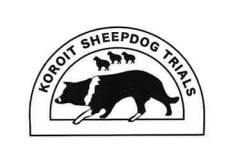Dr Debbie Twiss
Photosensitivity – what is it?
Photosensitivity reactions in cattle occur when light reactive plant components (called phototoxins) enter the skin and are exposed to ultraviolet light. The phototoxin reacts to UV in light coloured or thin-skinned or hairless areas such as around the eyes, nose or teats. The wavelengths of UV that cause photosensitivity reactions are a wider spectrum than those that result in sunburn.
What causes photosensitivity?
When cattle and sheep eat plants, the chlorophyll in the plants breaks down to release a phototoxin called phylloerythrin. Usually the animal processes phylloerythrin safely through the liver. Sometimes this is not possible if there is lots and lots of phylloerythrn or when the liver is damaged by toxic plants such as cape weed or rough dog’s tail. In this situation cattle become photosensitised as a result of un-processed phylloerythrin entering the blood stream.
Cattle may also become photosensitised directly by eating plants containing phototoxins, for example brassica crops (especially if fertilised with high levels of nitrogen) or weeds (e.g. St Johns Wort). A few plants (e.g. parsnips; celery and parsley) are able to cause blisters and photosensitivity on contact with skin.
What are the signs of photosensitivity?
Early signs of photosensitivity seen in dairy cows include irritation, kicking at cups during milking; shaking head and ears; shade-seeking behaviour and swelling of affected areas. The photosensitivity reaction causes irritation and inflammation that results in blistering, necrosis and sloughing of skin. Affected animals may even have discharge from the eyes and a blue appearance to the eye surface. The skin around the top of the hoof may be affected resulting in lameness and animals seek relief by standing in water –hence the colloquial term to describe photosensitivity: “swamp fever”.

Cows’ teats are hairless and especially susceptible to photosensitivity


In the photos above of a cow with photosensitisation, you can see that the white area is much thicker than the black
How do you treat photosensitisation?
In the acute stages affected animals should have access to shade during the whole of daylight hours e.g. under trees or with access to farm buildings. Anti-inflammatory and anti-histamine injections may relieve irritation and reduce self-trauma from rubbing/kicking affected area. Access to hay rather than green pasture reduces the amount of chlorophyll they have to deal with.
Emollient zinc sunblock creams should be applied to any sun burnt areas but especially the udder and teats to prevent long term damage and scarring. If the liver damage is extremely severe animals may not recover from the poisoning. The degree of skin damage has no correlation to survivability.






























